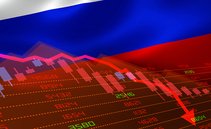During the last recession, in 2020, earnings growth fell 13% year over year, although it quickly recovered in 2021.

Fears of a recession are growing on Wall Street. But how real is this risk?
Much depends on how the economy is expected to evolve. There is no necessary relationship between earnings and US GDP growth (many companies have significant international operations), but 2% GDP growth is often associated with 6%-10% earnings growth.
S&P 500 earnings are expected to rise about 15% next year, well above the average, which typically hovers around 10%.
This would require not only that tech sector earnings remain strong, but that overall earnings be above average. While there is room for some weakness, this would still require a strong economy.
If you think we’re headed for a recession, that 15% earnings growth estimate is clearly wrong. But how wrong?
If GDP contracts, earnings growth could drop to zero or become negative. That’s what a recession is: negative GDP growth.
During the last recession, in 2020, earnings growth fell 13% year-over-year, although it quickly recovered in 2021.
An ordinary correction (of 10%) would take the S&P 500 to around 5,100, about 200 points below the current level.
Let’s develop 4 scenarios:
1. The current scenario, where we are now, is 15% earnings growth for 2025, with a multiple of 19.1. The S&P 500 is at around 5,346 ($243.53 x 15% growth x 19.1 = 5,346).
2. In a second scenario, we start with an optimistic assessment: GDP remains around 2% and international markets are stable. In that case, even if earnings expectations fall to 10% from 15%, the P/E ratio is unlikely to slip into recession territory.
So we assume 10% earnings growth for 2025, and since the economy is still growing, we keep the multiple at 19. This would put the S&P 500 at 5,089 ($243.53 x 10% growth x 19 = 5,089).
3. In a third scenario, assume 10% earnings growth for 2025 and assume a lower multiple, closer to historical value, of 17. This would take the S&P 500 to 4,554 ($243.53 x 10% growth % x 17 = 4.554).
4,554 would be about 15% lower than the current level and would leave the S&P 500 negative for the year (the S&P ended 2024 at 4,769).
4. In a fourth scenario, if GDP fell to zero or less, the numbers could get much worse. In that case let’s assume that earnings would rise 5% instead of 15% and the multiple falls to 15, we arrive at 3,835 on the S&P 500 ($243.53 x 5% growth x 15 = 3,835).
leggi anche
The Russian economy is on the brink of recession

There is a big difference between a slowdown in growth and a recession.
The employment numbers were 4.3% unemployment and 114,000 jobs added. This is not even remotely recessive.
Average job growth in recent years has been around 170,000, not far from July’s figure and close to the pre-pandemic level.
The fact that there was such a huge move in stocks and especially Treasury yields is a sign that the market had overheated. But it’s not a sign of recession.
Remember 2022: everyone was convinced of an imminent recession. Everyone was wrong.
Original article published on Money.it Italy 2024-08-26 07:00:00. Original title: Quanto è reale il rischio di recessione nel 2024?




